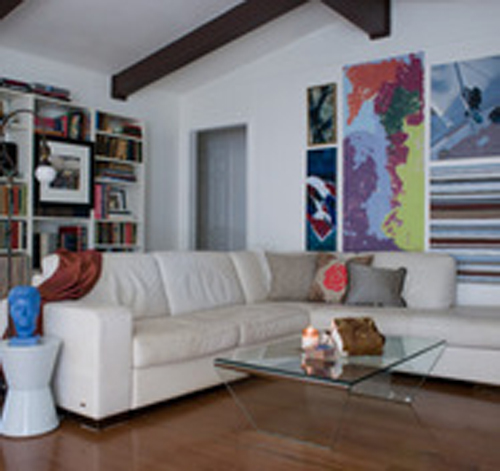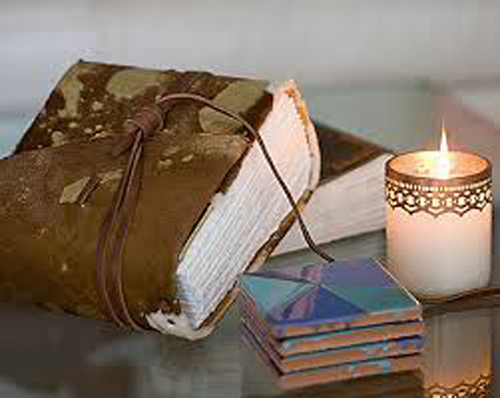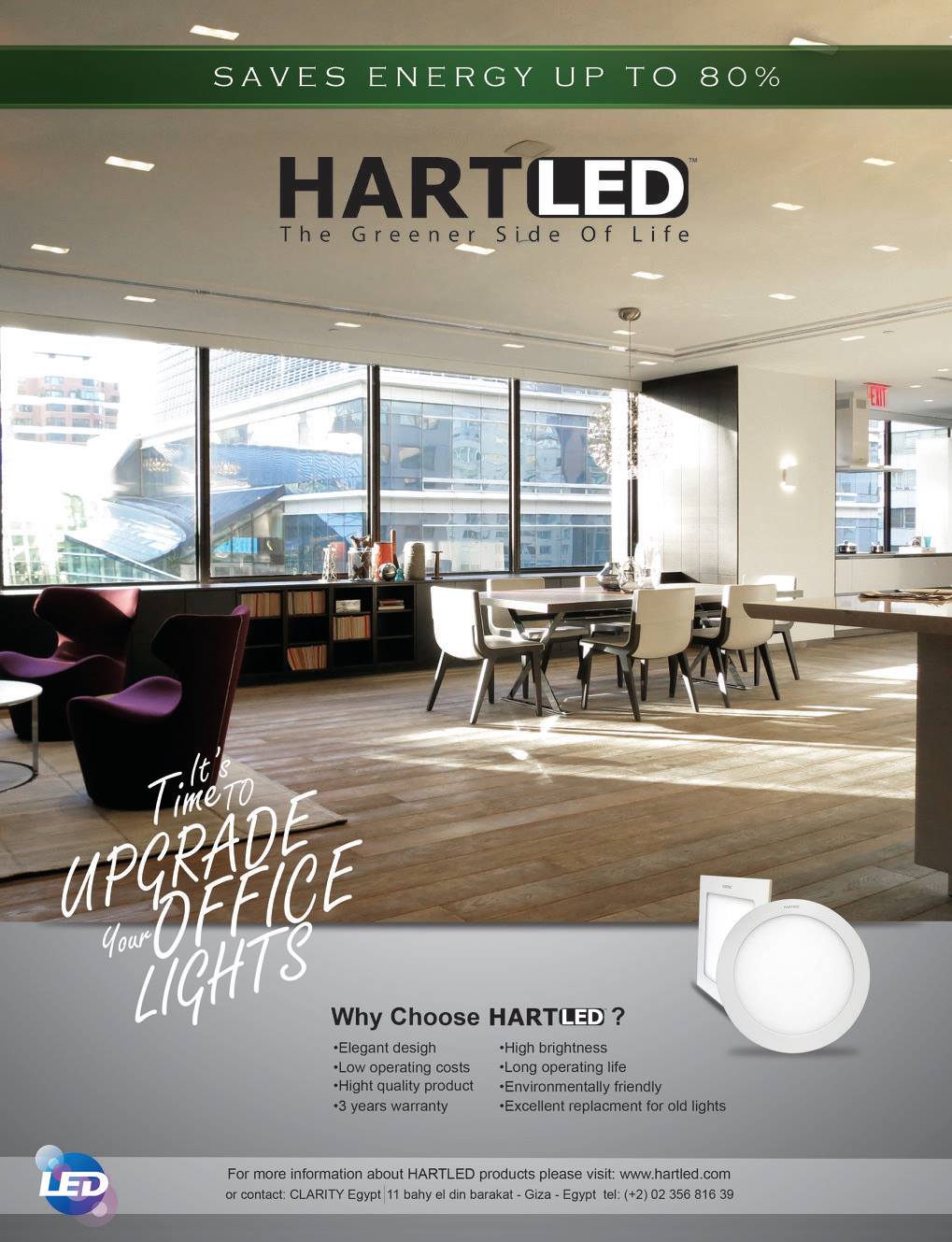Kelly LaPlante: for the Love of Green Design
Why is it that many believe that in order to go green–with respect to interiors–you will have to give up aesthetics? It truly baffles me, especially with the numerous green options available in the market today. Creating a sustainable living space does not mean that it will look boring, dull, or plain; on the contrary, you can still design a fabulous space with an eco-friendly mentality.
By Hend Seif El Din
One of my all-time favorite eco-designers, who strongly believes that “green is a standard, not a style,” takes you into the world of green interiors. FLAIR is proud to present leading designer Kelly LaPlante, who was recently dubbed the “hottest interior designer” in Austin Home Magazine’s 2012 Hot List.

What first attracted you to “going green”?
During my internships in college I noticed how wasteful the interior design industry is. I intrinsically had an issue with that and knew that if I was ever going to be able to have a clear conscience about my career of choice, I’d have to work to change the way things were done.
Tell me about your “green is a standard, not a style” philosophy?
I think it is important for people to understand that there is no such thing as a green “look.” Being conscious of the environment doesn’t mean that your home has to have bamboo flooring and colorless hemp fabric. There are thousands of companies who are working to make sustainability more interesting everyday.
How would you defined “eco” or “green” interior design?
There are many ways to go green. Whether it is re-purposing (antiques, for example, are inherently sustainable because they require no new resources) or using new materials that have been consciously produced. Home health and indoor air quality are also very important factors to consider. Everyone has different factors that weigh more heavily for them when they are working toward sustainable design and there is no such thing as “eco-perfect”—the important thing is being conscientious.

What inspired OID?
Once I decided that I wanted to work toward changing the industry, I knew I had to start my own company. I called it “Organic Interior Design” not just to imply that the products and processes were pure but also to reference the intrinsic harmony with your space that I feel is important to accomplish in design. A few years later, once the industry had caught on a bit, I changed the name of my company to Kelly LaPlante LLC.
When did you start KLOID? How difficult/challenging was it to launch?
I was very young when I started the company. I had never had a giant salary, a 401K, a home of my own or a fancy car. So the financial challenges of being self-employed were not hard for me. I know many people who started their companies in the mid-30s and are shocked at the sacrifices that they had to make. In that regard, I feel very lucky. Conversely, however, I was incredibly under-capitalized so it was a grass-roots effort all the way. In many ways, it still is.
What type of challenges do you face while “going green”?
Occasionally I fall in love with the aesthetic or function of a product and then cannot use it because it doesn’t meet my criteria for sustainability. That can be quite disappointing. But increasingly, manufacturers are more considerate of the environment—so that doesn’t happen as much as it used to.
Is it difficult to create an aesthetic yet green space? Do you sometimes need to sacrifice one for the other?
I’ve never had to sacrifice aesthetics for sustainability. I’ve had to get creative, but I’ve never had to design something that I wasn’t happy with in the end.
How do you combine “luxury” with “green”?
There are so many companies who have made this easy for me by producing things like luxury organic bedding, plush eco-friendly upholstery and handcrafted, sustainable wood furnishings. Long ago “luxury” and “green” really could not be used in the same sentence, but that is not the case anymore. A few years back, Lexus Motor Corporation made it their mission to help consumers connect the dots through their Lexus Hybrid Living program and I was very proud to be included in that effort. That was a major step in educating consumers in the US.
When it comes to clients, what are some of the challenges you face?
Like any designer, my challenges mostly have to do with design choices—things that I want that the client does not, or vise-versa. If a client has hired me, it is because they already know that they want to go green (at least in part) so that part is not a challenge. Before I was known for sustainability, I used to just show clients eco choices and not tell them that they were eco… sort of like baking broccoli into a pastry.
Are you picky about the clients you work with?
Absolutely. These days I take very few projects because I am now designing products and I am the editorial director of Standard Magazine. So I only take on one or two projects at a time and they have to be very special. Currently I’m designing an ecolodge on the island of Dominica in the West Indies and a small resort near Austin, where I am based—that’s it!
How organic are you with respect to other areas of your life?
Nobody’s perfect but it is very important to me so I make a great effort, especially when it comes to the food I feed my family. I am very lucky that, in Austin, we have many local organic farms.
Tell me about your book, Écologique.
The goal of Écologique was to help illustrate what I always tell people—that green is a standard, not a style. There are many different types of projects in the book. Not all of them are my style but they are all sustainable. There is Art Deco, über-casual, traditional, modern, ethnic…
Today, I would write a very different kind of book. The knowledge that was dispensed from Écologique, I feel, has served its purpose and will always be a good reference, but I don’t feel that it needs to be done again.
Why did you start your publication “Standard”? What inspired it?
I started Standard in September of 2010. The idea was to create a publication where everything we feature is responsibly produced but where we don’t hit our reader over the head with “eco-speak.” I felt that people were beginning to feel preached to and that is not the point—I want to inspire them! Today, Standard has grown and we feature all kinds of design—not just interiors but fashion, architecture, automotive, and all sorts of amazing products. I’ve told my staff to think outside the box and to bring me the unexpected. They are having a great time with it—and, as always, we’re putting focus on some tremendous designers, artisans, and manufacturers who are all producing their work in a way that makes us proud.
Which designers inspire you?
I have an endless line of inspiration—that is one of the best things about being an editorial director and constantly being introduced to new works. Lately, I’ve been very inspired by some of the local product designers here in Austin. I love the work of Agustina Rodrigues and her two companies—Agi Miagi and BBIITT. I’m also intrigues by Noah Marion and have convinced him to write a column for Standard, starting next week!
What would you say inspires your designs, other than the environment?
I’m incredibly inspired by world events and I love interpreting everything from riots to pop-culture into design. For example, the images of the masses of people in Tahrir Square a couple years ago—photographed from above—really inspired me to work with concentric circles. The new Great Gatsby film coming out in May is inspiring me (and, I am sure, thousands of others) to re-visit the Art Deco and Art Nouveau movements.
Unfortunately, some people believe that being “eco friendly” is very difficult, and not really livable; I personally disagree…how would you debunk such myths?
I think, for some, it is more convenient to dismiss sustainability because being conscientious takes time. People are busy—they have jobs and children and lives to lead. With my clients, I try to meet them where they are and slowly show them ways to make simple choices that will make a difference. Force-feeding sustainability never works out in our favor so it is better to get our clients to take small bites.
Do you have any DIY eco-design tips for those of us who loving “doing it ourselves”?
Re-use is one of the easiest ways to be green, so re-rehabilitating old furnishings can be a really fun thing to do. The result is a piece that has a story—something that you can be proud of. I enjoy discovering a vintage piece of furniture, sanding it and re-painting it in an unexpected color. That look has become quite trendy but the great thing about it is that you can always repaint for a new look. I’ve repainted my dining room table five times! (It’s purple right now).
Which “quick-fixes,” or easy tips would you give someone who wants to make their home a bit more eco-friendly today? I think the most important place to go green is your bed. We spend a lot of time in our beds and so creating a healthy environment there is very important. Start by buying organic cotton sheets the next time you are ready to purchase new bedding and make sure you’re using an eco-friendly detergent to wash them. When it is time to purchase new pillows or a new mattress, look for green options. The nice thing about organic bedding is that the industry has worked really hard to make luxurious options for beds—so it’s not a sacrifice and it’s easy to find!
Kelly LaPlante: for the Love of Green Design



